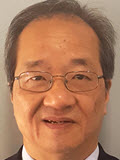
Kincho H. Law, Ph.D., Dist.M.ASCE, an exceptional researcher whose work is both theoretically novel and practically useful, has been named to the 2017 class of ASCE Distinguished Members for pioneering innovations in applying computational and information sciences to many civil engineering issues, ranging from wireless sensing for structural monitoring and control, and the management of regulatory information for compliance and analysis, to wind farm monitoring and power maximization.
Law is currently a professor in the Department of Civil and Environmental Engineering at Stanford University. His research is fundamental and model-based, derived from universal mathematical or computational simulation algorithms so that it can be readily generalized to other applications and domains in the field. As well, it addresses important opportunities to advance civil engineering practice.
Early in his career, he championed the use of computers for finite element structural analysis and was able to apply key concepts from research based on sparse matrix algebra to advance the optimization of semiconductor layout by electrical engineers. His contribution to structural engineering practice is in computational data acquisition, integration, and analysis via distributed wireless sensing for structural performance monitoring and structural health diagnosis. Law based this research in fundamental science for generalization purposes.
In the early 2000s, he worked on defining data structures and ontologies to facilitate data sharing and software interoperation for cloud-based engineering computing via web services. After significant advances from the studies, the way was shown for engineering software developers to begin offering the variety of integrated engineering services “in the cloud” seen during the past five years.
Expanding on work carried out by his Ph.D. advisor, Steven Fenves at Carnegie Mellon University, Law has conducted research on ways to automate the specification and compliance verification of civil engineering design codes. This includes the representation and interpretation of rules specifying constraints to be met so that they can be machine-readable and machine-useable, to support both engineers conducting computer-based analysis and design and regulatory officials automatically verifying that designs conform to codes. Collaborating with faculty in Stanford’s Law School and supported by Harvard’s Kennedy School of Government, he showed that the same approaches could be used to digitally specify and verify compliance with a range of other kinds of regulations and laws.
Law has served on two of ASCE’s Technical Councils, chaired the Committee on Computer-Aided Analysis and Design, and coordinated, co-hosted, and organized many conferences and technical sessions throughout the years. He has also been active with the American Society of Mechanical Engineers and the Network for Earthquake Engineering Simulation.
He has organized conferences for Stanford and gleaned awards from the university for Faculty Member of the Year and Outstanding Research Advisor. In 2011 he was given the ASCE Computing in Civil Engineering Award.
Law has authored or coauthored over 400 book chapters, journal articles, and conference papers, and has won Best Paper awards from various organizations six times.

